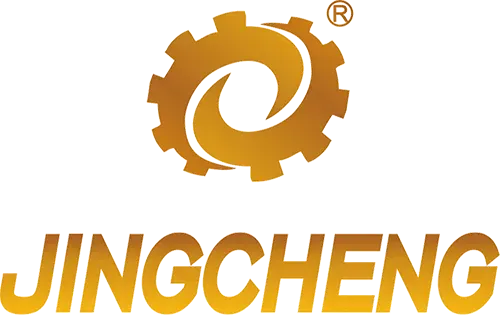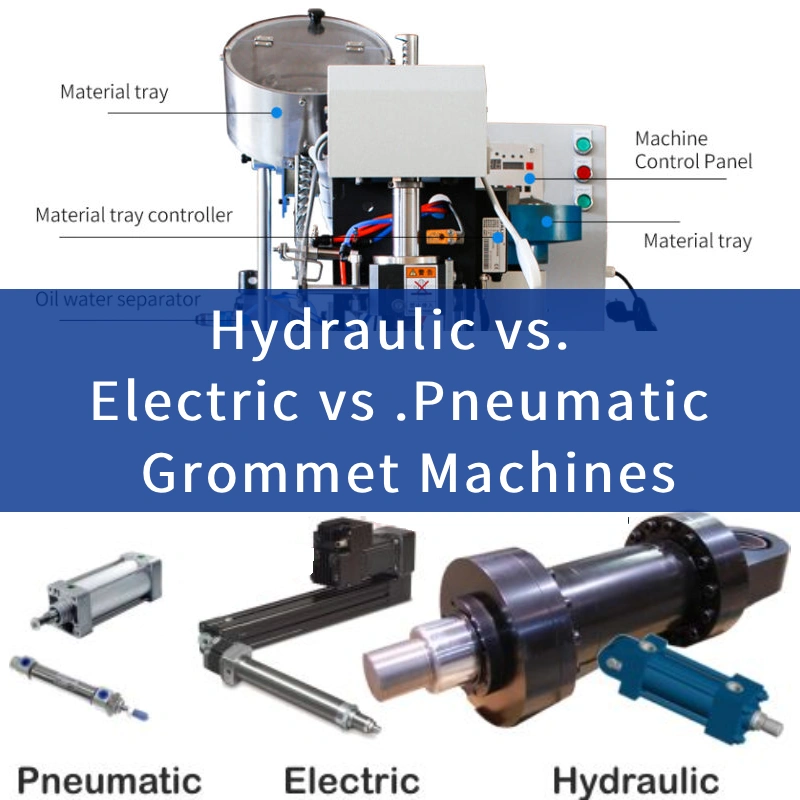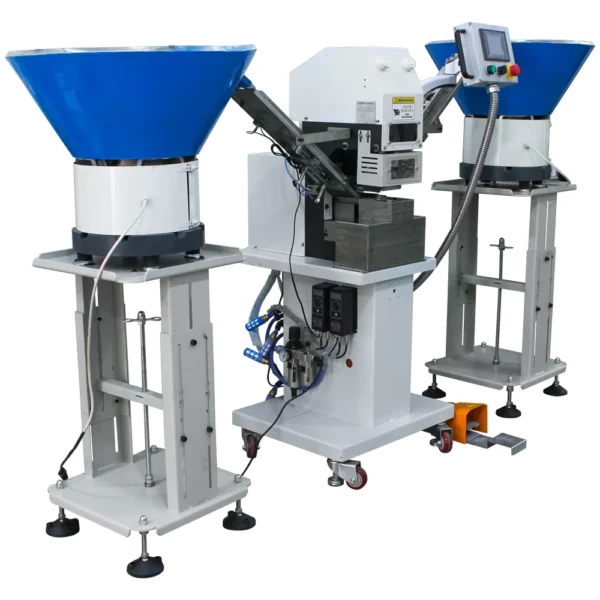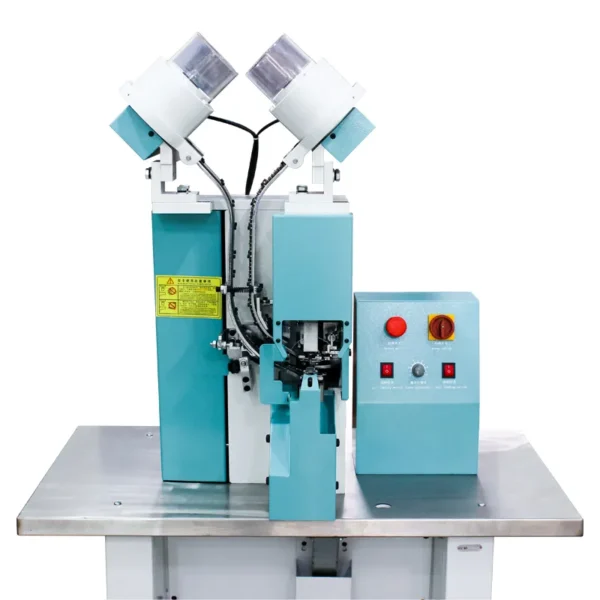Choosing the right grommet machine for your factory isn’t as simple as flipping through a catalog and picking one that looks good. It’s a serious investment that directly impacts efficiency, quality, and even worker safety. Over the years at QCMACHINERY, we’ve guided countless wholesalers, workshop owners, and large-scale manufacturers through this exact decision. And the truth is—there’s no one-size-fits-all answer.
Hydraulic, electric pneumatic, and pneumatic grommet machines each have unique strengths and trade-offs. The wrong choice can slow down production, create maintenance headaches, or inflate operating costs. But the right machine? It can transform a factory floor, streamline operations, and pay for itself faster than most managers expect.
We’ve spent decades not only manufacturing Pneumatic and Electric Pneumatic Grommet Machines but also consulting with factories across different industries. That means we don’t just sell machines—we understand how they behave under real-world conditions. One of our long-time clients put it best: “Before we talked to QCMACHINERY, we didn’t realize how much the wrong grommet machine was costing us. Their advice changed our operations.”
In this article, we’ll break down the pros and cons of hydraulic, pneumatic, and electric pneumatic grommet machines, all while sharing lessons learned, customer feedback, and compliance insights. By the end, you’ll have a clear picture of which machine truly fits your factory’s needs.
Pneumatic Grommet Machines: The Reliable Workhorses
When people ask us which grommet machine gives the best balance of performance and cost, our first instinct is to point them toward pneumatic grommet machines. They’re the tried-and-true workhorses of the industry, favored for their simplicity, speed, and reliability.
These machines use compressed air to drive force, making them ideal for medium-to-large production runs. They’re particularly popular with factories that value consistent performance without excessive complexity. In fact, one wholesale client told us: “The pneumatic machines we bought from QCMACHINERY have been running for three years straight with minimal downtime. They just don’t quit.”
From a compliance standpoint, pneumatic systems meet international safety expectations, provided they’re operated under proper pressure controls and with OSHA-compliant air handling systems. ISO 11148-8, which governs safety requirements for pneumatic machinery, highlights how these machines should be maintained to ensure worker safety. At QCMACHINERY, we build our pneumatic grommet machines with these standards in mind, so factories can pass audits without worry.
Another often-overlooked advantage? Maintenance. Pneumatic systems are straightforward, with fewer complex parts compared to hydraulics. Operators can be trained quickly, and spare parts are inexpensive and widely available. That’s why smaller factories often lean toward pneumatic machines—they’re powerful enough for demanding jobs but simple enough to manage without specialized technicians.
Still, pneumatic machines aren’t perfect. They depend on a clean, reliable air supply. Factories without strong air compressor systems may find efficiency dropping if their infrastructure isn’t up to standard. But for most, the balance of cost, reliability, and speed makes pneumatic grommet machines a winning choice.
Electric Pneumatic Grommet Machines: The Modern Upgrade
If pneumatic machines are the workhorses, electric pneumatic grommet machines are the modern upgrade—faster, smarter, and built for precision. At QCMACHINERY, these are some of our most in-demand models because they combine the best of both worlds: the force of compressed air with the precision of electric control.
So, what does that mean in practice? Think of it like this: pneumatic machines are powerful, but sometimes they lack finesse. Electric pneumatic machines add that finesse. The electric component ensures precise timing, consistent pressure, and even automation options that reduce operator fatigue. That makes them especially popular in industries where precision is non-negotiable—like banners, tarpaulins, and technical textiles.
One of our wholesale customers summed it up beautifully: “The electric pneumatic machines from QCMACHINERY gave us the accuracy we needed for high-value products. The consistency was something manual methods could never achieve.”
From an industry compliance perspective, electric pneumatic systems align with ISO 12100 standards on machine safety and design. They also meet stricter energy efficiency goals, which are increasingly important as brands push their supply chains toward greener manufacturing.
But perhaps the most underrated benefit is operator experience. Workers often describe electric pneumatic machines as smoother and less fatiguing to use. That translates into fewer mistakes, higher productivity, and better morale. In today’s labor market, where skilled operators are hard to keep, giving them tools that make their jobs easier is a real advantage.
The trade-off? Higher upfront cost compared to standard pneumatic models. But for factories that handle delicate or high-value products, the extra investment pays back quickly through reduced waste, faster turnaround times, and stronger compliance with demanding buyer standards.
Hydraulic Grommet Machines: The Heavy-Duty Powerhouses
Now let’s talk about the hydraulic grommet machines. If pneumatic and electric pneumatic systems are about balance and precision, hydraulic machines are about raw, unrelenting power. These are the machines built for the toughest materials—industrial fabrics, leather, multi-layer composites—where other systems might struggle or fail.
Hydraulic machines operate by using pressurized fluid to deliver force, which allows them to achieve levels of power pneumatic systems simply can’t match. In factories producing heavy-duty products like industrial covers, automotive textiles, or military-grade equipment, hydraulics are often the only realistic choice.
One of our client stories illustrates this well. A factory producing heavy-duty tarpaulins told us: “Our old pneumatic machine just couldn’t handle thicker materials consistently. Switching to a hydraulic system eliminated constant rework and downtime. It was a game changer.”
From a compliance angle, hydraulic systems must meet strict international standards, such as ISO 4413, which covers hydraulic fluid power safety. At QCMACHINERY, we emphasize design features like emergency stop systems and pressure regulation to ensure machines not only perform but also pass safety audits with ease.
The downside, of course, is complexity. Hydraulic machines are heavier, more expensive, and require specialized maintenance. They also consume more energy compared to pneumatic options. That means they’re not for every factory. But for those dealing with extremely tough materials, the reliability and power of hydraulic grommet machines can’t be beat.
Comparing Costs: Upfront vs. Long-Term Value
One of the most common questions we get is: “Which grommet machine gives the best value for money?” And here’s the honest answer—it depends.
Pneumatic machines are the most affordable upfront. They’re a fantastic option for small-to-medium factories that need reliable performance without stretching budgets. Electric pneumatic machines come next, costing more but offering greater precision and efficiency. Hydraulic machines are usually the most expensive, not just to purchase but also to maintain.
But here’s where experience matters: long-term value often outweighs upfront cost. For example, a factory using a pneumatic machine for heavy materials may save on the initial investment but lose money later in rework, downtime, and wasted material. On the other hand, a hydraulic machine might feel expensive at the start but pays back over years of flawless performance.
We’ve seen factories recover their investment in as little as 18 months by choosing the right machine for their material and production volume. A wholesale partner in Europe told us: “The upfront cost made us hesitate, but QCMACHINERY’s advice was spot-on. The machine paid for itself faster than we expected.”
So the real question isn’t “Which machine is cheapest?” but rather “Which machine is best suited to your needs?”
Worker Safety and Ergonomics: Beyond Compliance
In our industry, safety isn’t just about compliance checklists—it’s about protecting the people who make factories run. We’ve visited countless production floors, and the difference between a safe, ergonomic grommet machine and a poorly designed one is night and day.
Pneumatic systems are generally considered safe when properly maintained, but they require operators to stay alert to air pressure hazards. Electric pneumatic machines reduce that risk with better control systems and smoother operation. Hydraulic machines, being the most powerful, require the strictest safeguards, including robust emergency stops and fluid leak protections.
Industry standards like OSHA regulations and CE certifications exist for a reason—they set the baseline for keeping operators safe. At QCMACHINERY, we go further, designing machines that are intuitive to use and ergonomically friendly. Why? Because a safe, comfortable operator is also a productive operator.
One factory manager told us: “After upgrading to QCMACHINERY’s electric pneumatic machines, our workers reported less fatigue and fewer mistakes. That alone boosted output by 20%.” That’s proof that safety and efficiency go hand in hand.
Customer and Wholesale Feedback: Trust Built on Reliability
At QCMACHINERY, we don’t just measure success by the number of machines sold—we measure it by the trust we build with our customers. And the feedback we receive consistently highlights one word: reliability.
Wholesale buyers often tell us that once they switched to our pneumatic or electric pneumatic machines, their order cycles became smoother, defect rates plummeted, and customers noticed the improvement. End-users, though less familiar with machine details, appreciate the quality difference in the final products—no loose grommets, no misaligned holes, no material damage.
One customer from South America told us: “We used to budget extra time for rework. With QCMACHINERY’s machines, rework is practically zero. That reliability changed our entire production schedule.”
This isn’t just about selling machines—it’s about delivering confidence. When factories know their machines won’t let them down, they can focus on growth, new contracts, and building their reputation. That’s the kind of trust we aim for with every customer.
Which Machine is Right for Your Factory?
So, how do you decide between pneumatic, electric pneumatic, and hydraulic grommet machines? The answer depends on three key factors: material, production volume, and budget.
- If you’re handling standard materials with mid-range production, pneumatic machines are often the best choice—affordable, reliable, and easy to maintain.
- If precision and speed are critical, or if you’re producing high-value products, electric pneumatic machines are worth the investment.
- If you’re working with extremely tough or thick materials, hydraulic machines are the only practical option for consistent results.
Our role at QCMACHINERY is to guide you through this decision. With decades of experience, we’ve seen what works—and what doesn’t—across hundreds of factories worldwide. We don’t just provide machines; we provide solutions tailored to your needs.
Conclusion
Choosing the right grommet machine is more than a technical decision—it’s a strategic one. It affects efficiency, safety, cost, and even your factory’s reputation. Pneumatic, electric pneumatic, and hydraulic machines each bring unique benefits, but only one will truly fit your needs.
At QCMACHINERY, we believe in pairing expertise with honesty. We don’t push the most expensive machine; we help you find the right one. Because at the end of the day, your success is our success.
Factories that choose wisely thrive. Factories that compromise struggle. The choice is yours—but with the right guidance, it doesn’t have to be difficult.



